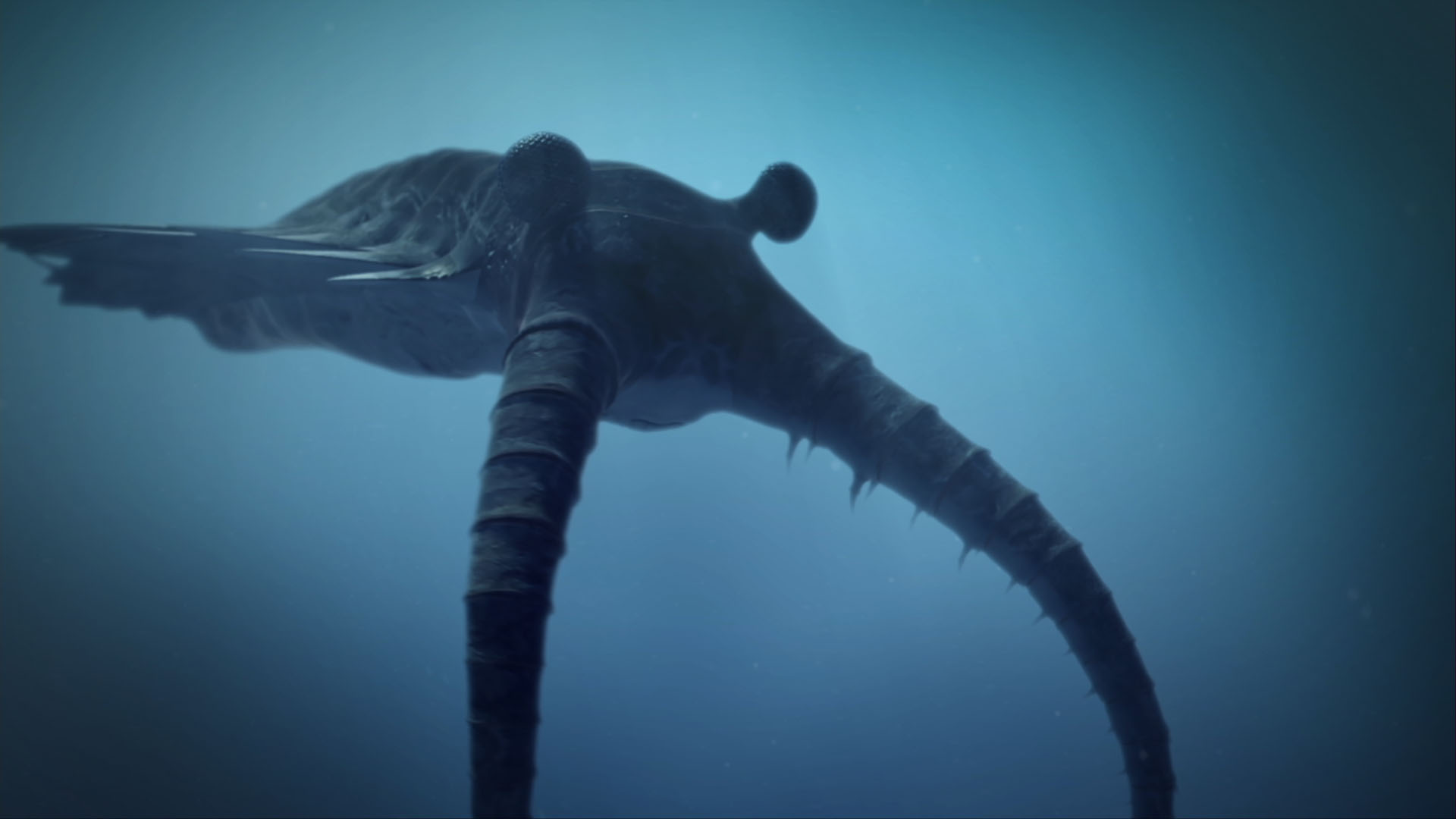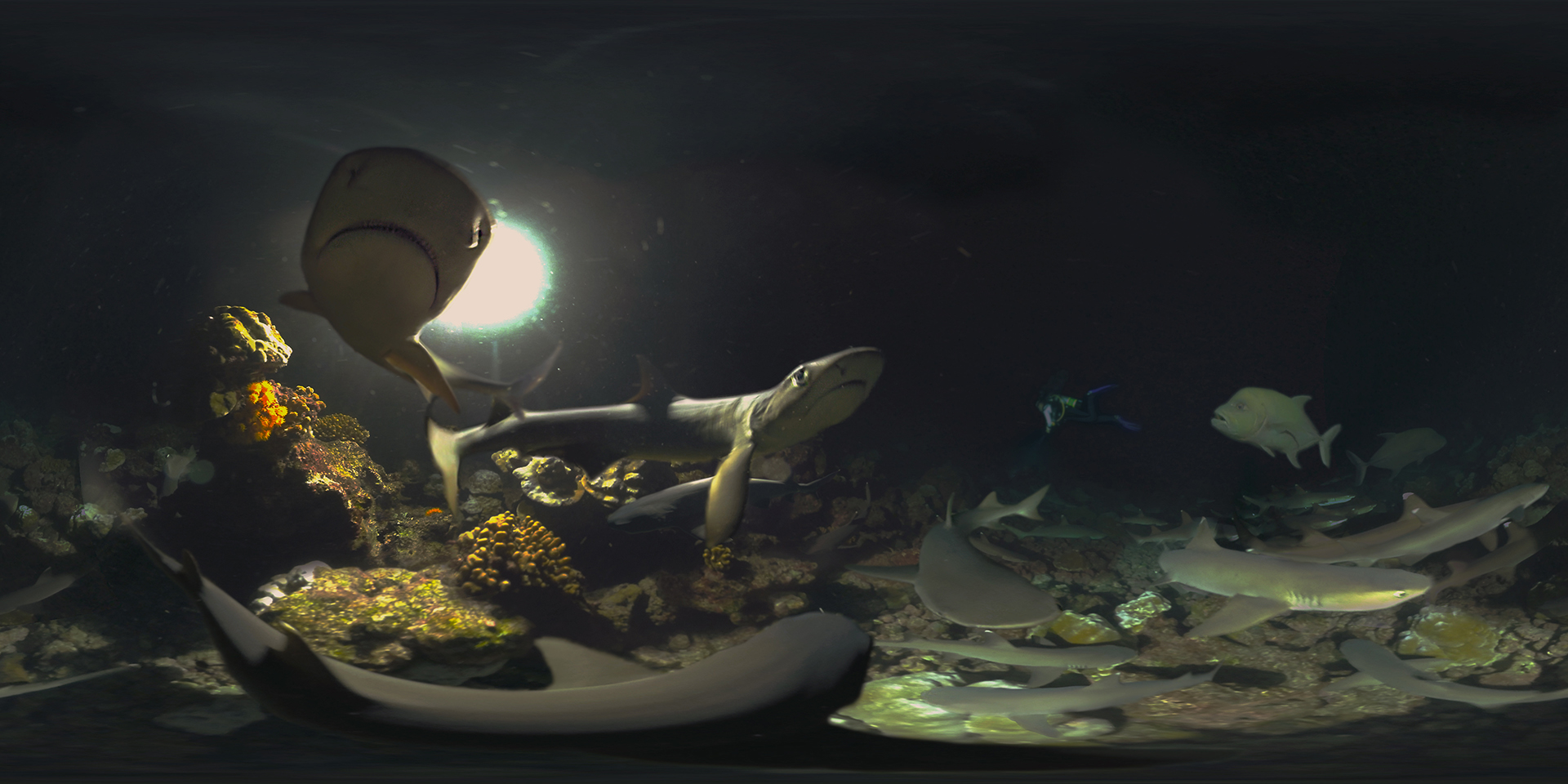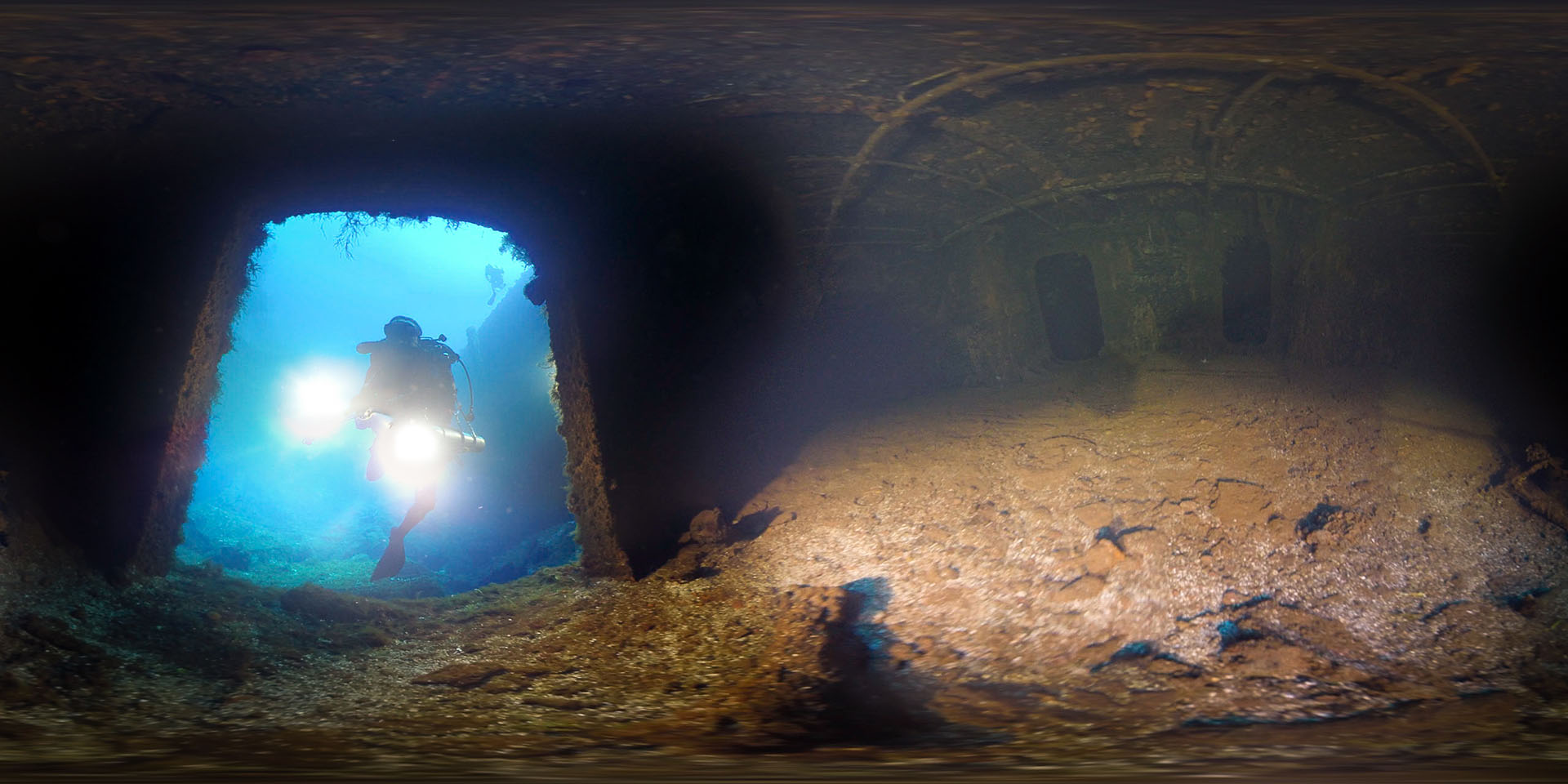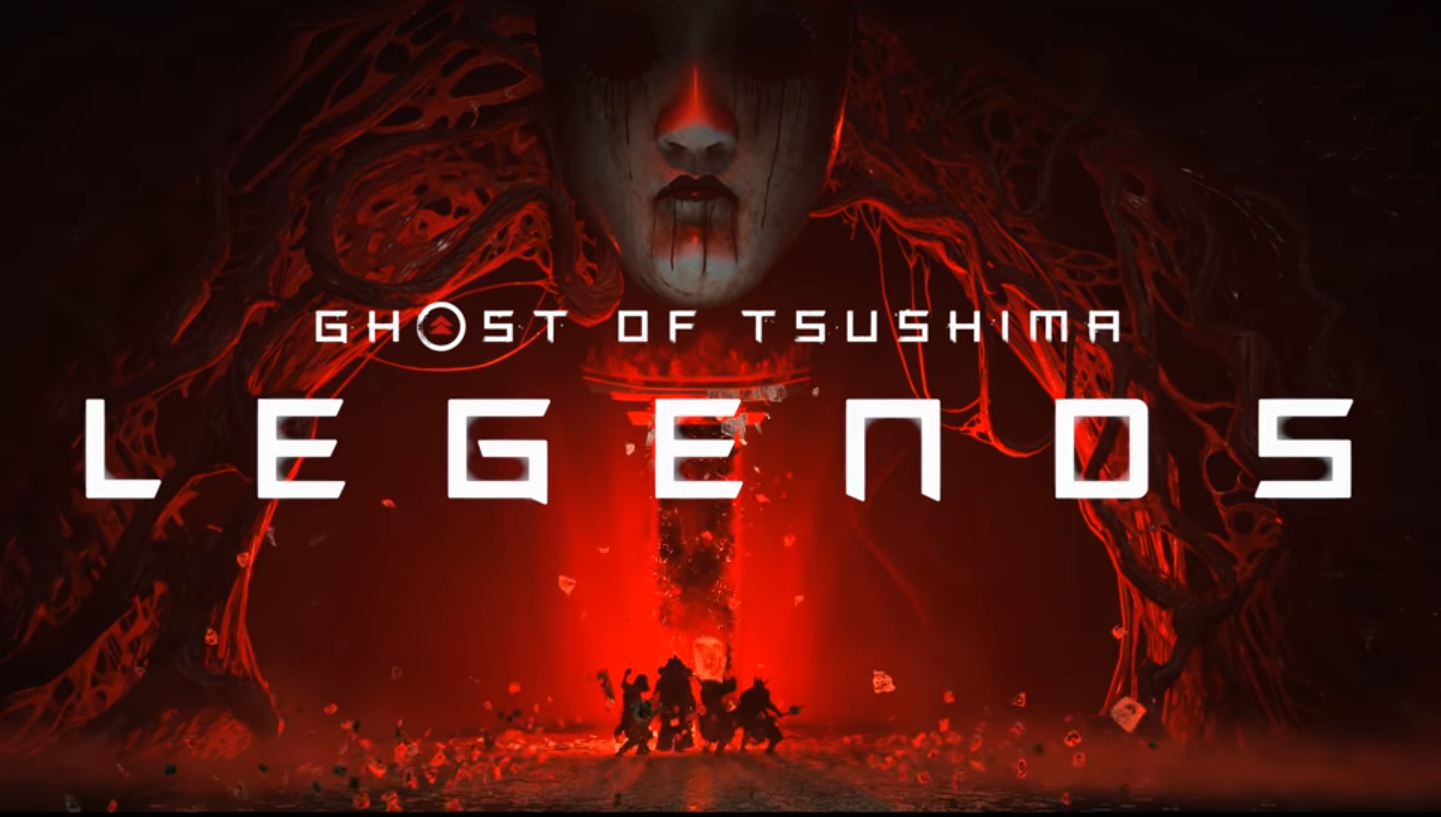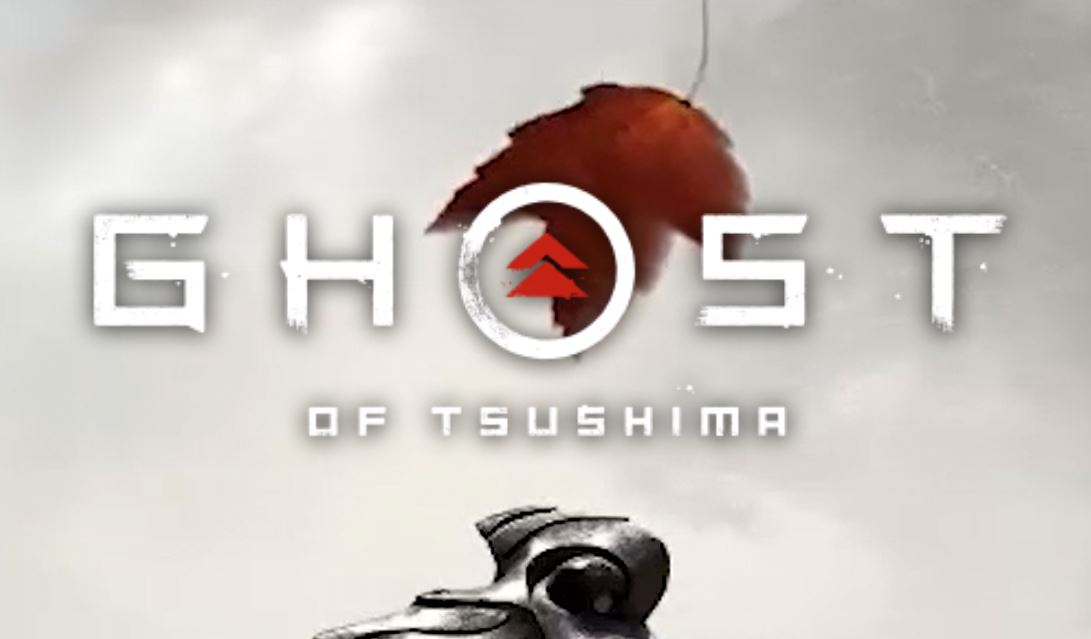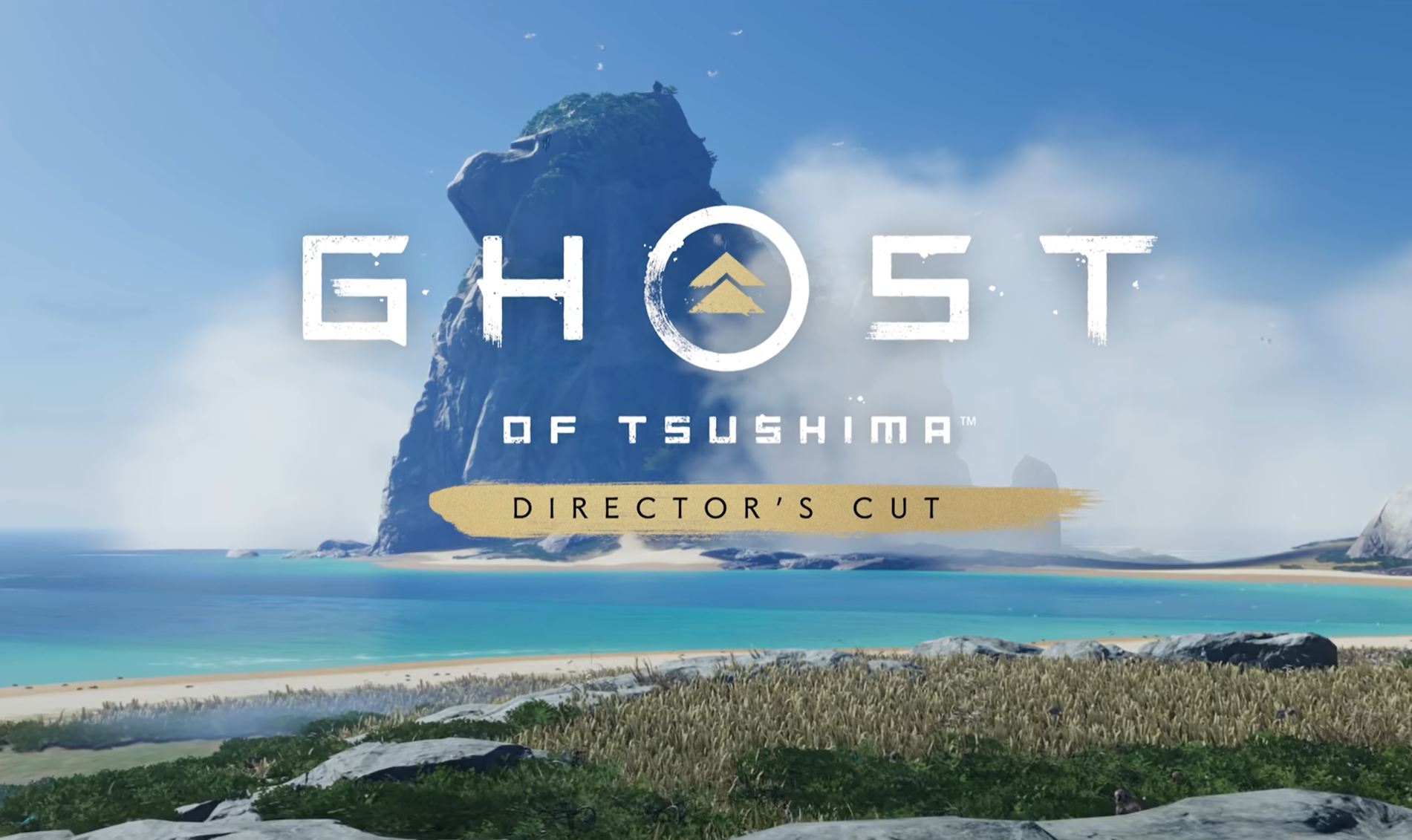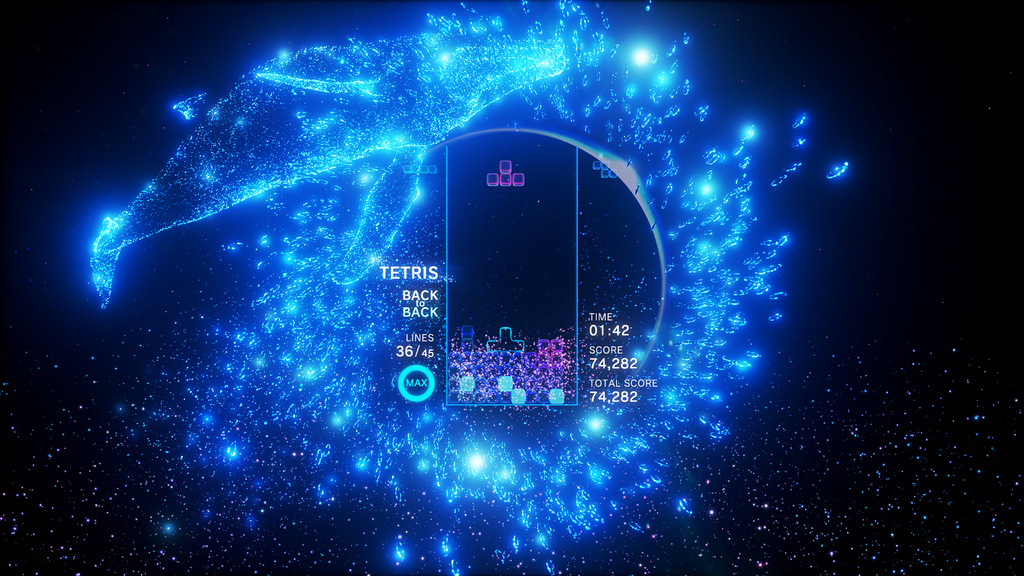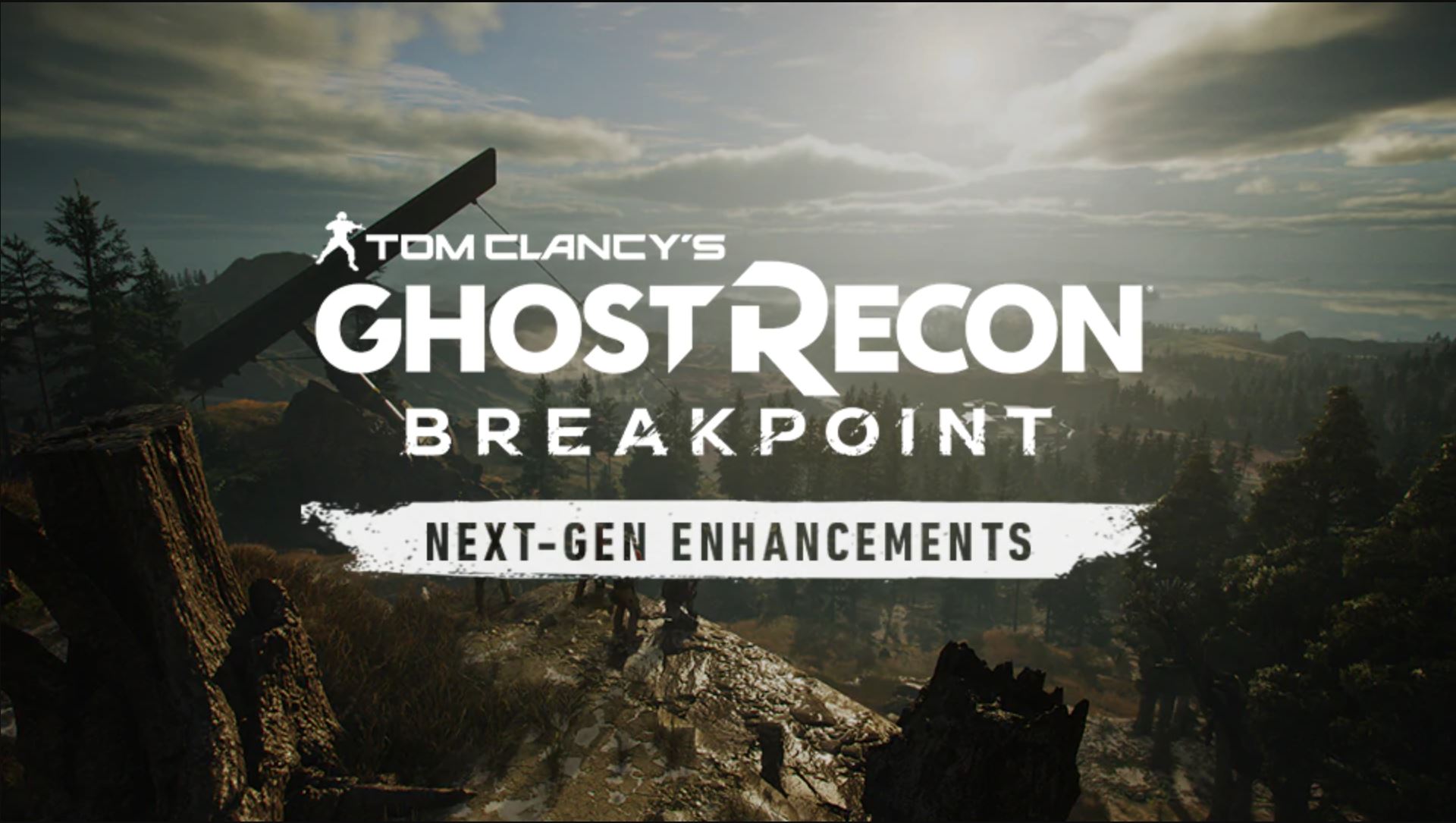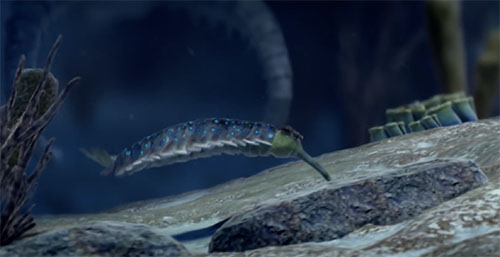
Earlier this month, three ‘PlayStation VR Experiences’ hit the PlayStation Store. David Attenborough’s First Life, Cocos: Shark Island and Atomic Ghost Fleet each offer an immersive documentary experience which takes place all around the viewer in a 360 degree environment. All three titles have been developed by Alchemy VR, in co-operation with other companies such as Alucia Productions, although there is a noticeable difference in the techniques used to produce them. Thanks to Sony, I’ve been able to watch all three experiences, which all definitely show promise; although whether they’re worth purchasing is up to how interested you are in their subject material. In any case, here are my thoughts.
David Attenborough’s First Life
As you’d expect, given the title, David Attenborough’s First Life has the best narration out of the three, with the legendary naturalist lending his smooth, well-informed voiceover to the proceedings. First Life is actually entirely CGI, which means that the entire experience is not only 360 degrees, but also in stereoscopic 3D. It also has the perfect excuse for this, as First Life examines the origins of life hundreds of billions of years ago in Earth’s oceans, from the very first multi-cellular life-forms to more complex and successful creatures such as trilobites, and as such has to imagine how they looked and behaved.
The experience isn’t interactive, as you’re simply on-rails the entire time, being taken along for the ride as you swim through several aquatic environments, examining all kinds of early life from sea slugs to giant scorpions. While the documentary is informative, it is very surface level, giving you a brief synopsis on the early evolution of life while also providing a few minor thrills as all kinds of claws, tentacles and fish rush past you in 3D, to great effect. Unfortunately, as is an ongoing theme with these videos, compression and resolution is an issue with this experience, as some objects can appear blurry when you try to focus on them, and artefacts can crop up around the edges of some of the creatures.
If you’ve seen the full-length series David Attenborough’s First Life on TV or DVD, you should also be aware that this is nowhere near that detailed – lasting only about 15 minutes in total. For AU $9.55, it’s a little pricey for a such a stripped down experience compared to the full series, but it’s also the most immersive of three experiences currently on offer.
Cocos: Shark Island
Another short experience, also coming in at around 10 minutes, Cocos: Shark Island is a live action documentary, filmed with a special underwater VR camera set-up by the crew of the Alucia, as they dive off the coast of the Cocos.
There are a couple of drawbacks to this approach – one is that the setup essentially involves having two cameras back-to-back to capture the 360 degree surroundings, however the stitching between the two images is a bit unstable in this video, leading to edges of the video to either side of you overlapping, and fish disappearing between the two. It also means that the crew didn’t tape four cameras back-to-back, meaning that this isn’t in stereoscopic 3D.
The other consequence of filming underwater, where there are consistently areas where light can’t reach, is that the compression artefacts and blurriness constantly rear their ugly heads. This really is an experience that would benefit having a high quality stream on something like a Blu Ray, as the 1.4GB it’s currently sitting it clearly isn’t enough to have a truly clear image.
That all aside, there’s some very cool cinematography as the divers shoot the various fish around the Cocos, and even a giant bait ball. The sharks that the experience is selling itself on are White Tip Sharks, which the camera crew follows at night to see them frantically feeding around the ocean floor. It’s not anywhere as exciting or interesting as you might imagine a shark documentary to be, although it is rather sedate and pleasant to sit through. It does give the feeling of the crew taking this whiz-bang 360 degree camera out for a day, then trying to dress up the footage as impressively as possible. At AU $6.75, its not that expensive, but its brevity and lack of real immersion mean that you won’t come back to it many times.
Atomic Ghost Fleet
Finally, Atomic Ghost Fleet, also filmed by the crew of the Alucia, is the longest documentary of the three, coming in at 18 minutes, and the one that goes into the most detail about its subject matter.
The documentary takes you on a dive through the wrecks of three ships in the Bimini Atoll, where the United States detonated several test nuclear explosions to examine their effect on different types of vessels. Once again, this experience is in 2D, but still stereoscopic, and with a steadier hand behind the camera this time.
With the longest running time, you do get a fair bit more detail about the wrecks and their importance and role in World War II. The most impressive among these is the USS Saratoga, an aircraft carrier, which literally towers before you like a submerged skyscraper as you approach. Being able to go inside one of these wrecks and examine their corroded hallways is also pretty cool, especially when you are able to look all around you for details.
However, compression is once again a big issue here, making many darker areas of the wrecks incredibly tough to make out as they blur into artefacts and a general mass of lost detail.
At AU $6.75, it’s not bad value for money as the most interesting of the three, for my money anyway, and one I might potentially watch again at some point in the future.
To sum up: All three experiences are short, and only one of them (First Life) is in 3D as well as in VR, but they are priced relatively low. In terms of immersion and a proof-of-concept of making a documentary into a 3D VR experience, David Attenborough’s First Life may be worth a look, while Atomic Ghost Fleet is a neat look at an interesting subject matter. Unfortunately, they all suffer from the same problems with video quality and compression, which looks like it will remain a concern for PSVR videos with relatively small file sizes.

